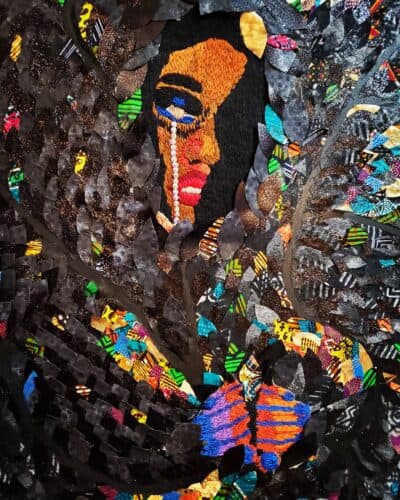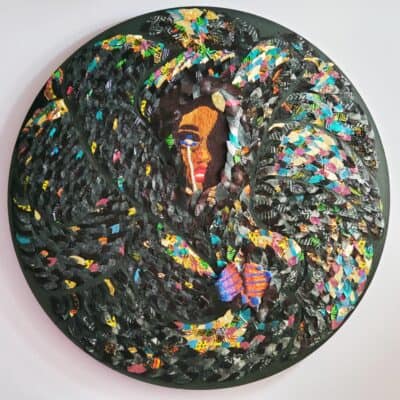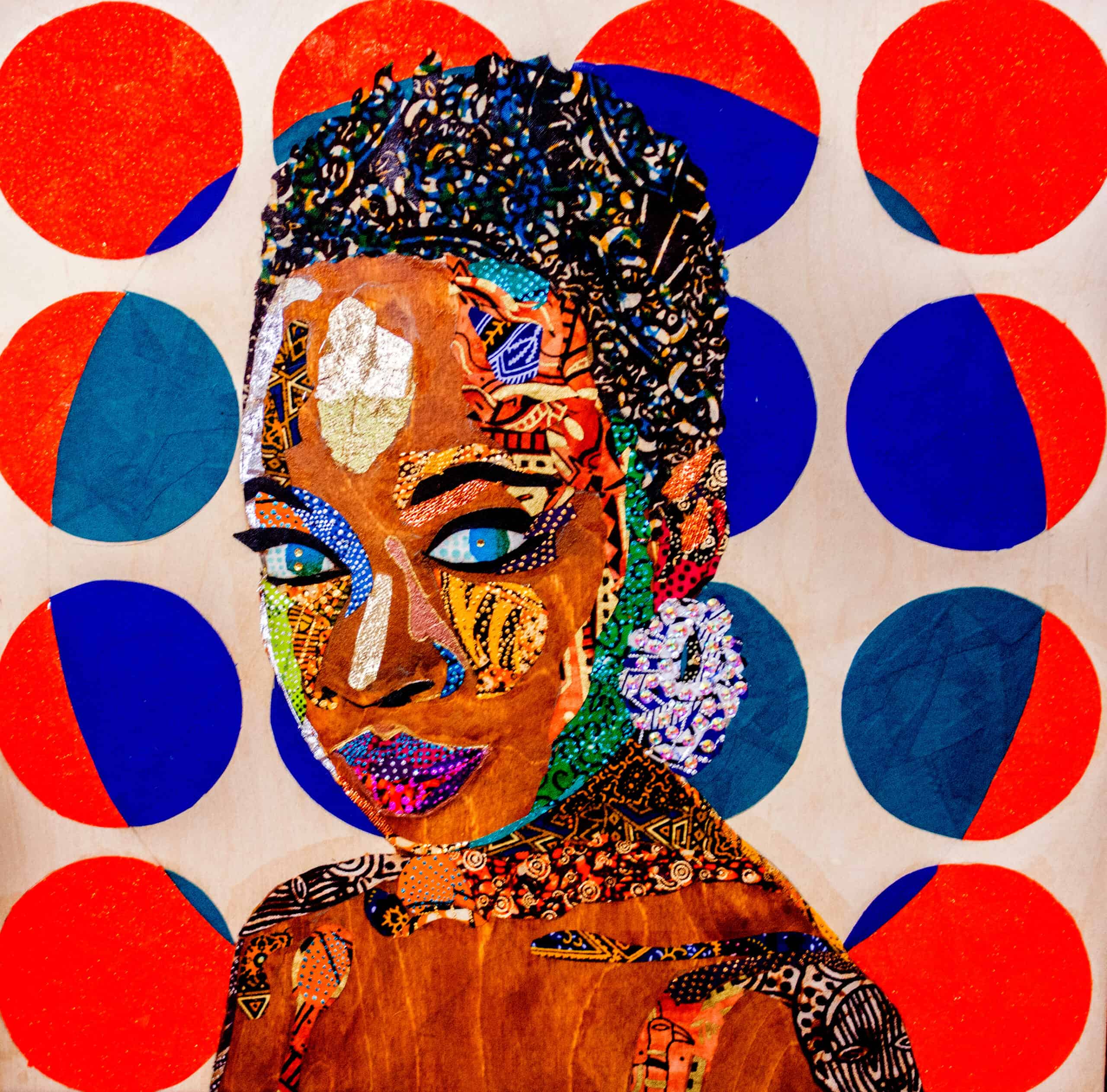
What did the show’s theme ‘To Speak Without Speaking’ make you want to explore?
I wanted to explore what most Black, Indigenous and Brown people feel regarding the disassociation of dealing with anti-black racism and violence against our bodies in the height of COVID. The devastation of losing loved ones to this virus was the equalizer, in regards to humanity’s losses though it still couldn’t humanize the grief, loss, tears and misery that was being felt by Black, Indigenous and Brown people, even as they lost loved ones to COVID.
Our racialized bodies were challenged by the affects of the pandemic as well as the overwhelming feelings of anger, resentment and rage due to white supremacy.
How has the pandemic impacted your creativity?
I felt unable to connect with my creativity for months but got some solace in helping my community by facilitating workshops on mental wellness and the arts. The impact of my workshops not only help the participants but also helped my mental health.

Apanaki Minerve’s ‘Without Question: Danai Gurira I Numb’ for Being Scene 2021
How does art support your mental health?
The beginning of my artist journey started with using art to channel my trauma. I believe my art is an extension of my own therapy. I use the canvas and the African textiles as the medium to work out my depression, sometimes the tactile nature of my art practice becomes meditative and helps elevate my mood.
What’s a lesson or philosophy that is currently guiding your artistic practice?
I would say the lesson guiding my art practice is to be fearless. As a self-taught artist, I struggle with imposter syndrome and feel everything I create a piece of artwork that is just the universe reinforcing that I am an artist. With every canvas, I try to push my creativity and textile art practice, I want to see how far I can stretch the reaches of fabric art.
The Being Scene virtual exhibit is running until March 28th. Jump in and explore now.




 Follow Us On Instagram
Follow Us On Instagram
